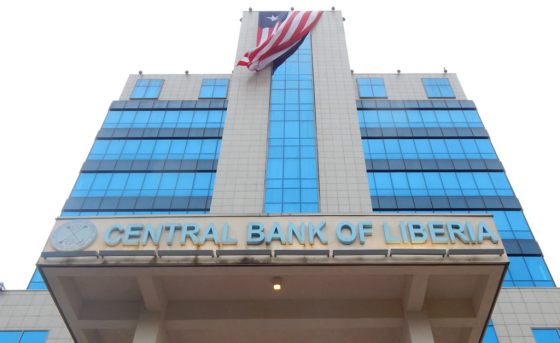Liberia: ‘Mobile Money Transactions Surge to US$2.2B’, CBL Reports

— “The value of mobile money transactions in Liberian dollars rose to L$281.7 billion, from L$251.4 billion recorded in 2021, while the value of United States dollars transactions surged to US$2.2 billion, from US$1.4 billion in 2021,” the CBL report noted.
Financial transactions in Liberia are now dominated by mobile money, with usage up in two consecutive years.
This revelation, contained in the Central Bank of Liberia 2022 annual report shows that the value of transactions carried out through mobile money platforms surged to L$281.7 billion and US$2.2 billion, respectively.
This represents a significant increase from the 2021 figures of L$251.4 billion and US$1.4 billion — making mobile money a key driver in promoting financial inclusion in the country, particularly in rural areas where access to traditional banking services is limited.
“The digital financial service space expanded more than anticipated with expansion in mobile money payments, including inbound transfer terminating into mobile wallets as the dominant means of electronic payments in 2022.”
“The value of mobile money transactions in Liberian dollars rose to L$281.7 billion, from L$251.4 billion recorded in 2021, while the value of United States dollars transactions surged to US$2.2 billion, from US$1.4 billion in 2021,” the Bank report noted.
The rise in mobile money transactions, which the Bank attributed to monetary policy reform, comes as over 1.5 million Liberians now use the platform for their financial transactions.
Its widespread adoption can be attributed to its convenience, which enables people to store, send, and receive money using their mobile phones without requiring a bank account.
However, the popularity of mobile money mainly stems from its ability to provide financial services to the majority of the unbanked population, who struggle to access conventional banking services.
The ease of use of mobile money services has pushed Orange and LoneStar Cell MTN to expand their reach to nearly every part of the country, offering much-needed relief to rural Liberians.
“Liberia is expected to witness further deepening of financial inclusion due mainly to the increasing acceptability of mobile money operations and other digital financial services, including growth in FinTech operations,” the Bank report said.
It added that the number of mobile money registered agents has increased to 109,081 in 2022, from a mere 52,308 in 2021, which increased the customer base to leverage the use of mobile money.
Mobile money, according to the Bank, has emerged as a key driver of financial inclusion and is expected to play a critical role in shaping Kenya's financial landscape in the years to come.
“The CBL will also continue to create the enabling environment for banks to increase investment in digital financial products and mobile money operations. This action is anticipated to witness the relative easing of liquidity pressure on commercial banks and widen the usage of digital payments,” the Bank report noted.
Meanwhile, the Bank has also disclosed that at the end of last year, Liberia's debt distress level was moderate, despite a rise in the stock of public debt by 16.6 percent to 51.3 percent of GDP, on account of increases in both domestic and external borrowings.
The stock of domestic debt, the Bank noted, stood at US$884.4 million (22.5 percent of GDP), while the stock of external debt expanded by 10.5 percent to US$1,134.3 million (28.8 percent of GDP).
By the end-December 2022, a total of US$195.1 million (5.0 percent of GDP) was sourced from domestic financial institutions, of which commercial banks’ lending accounted for 59.0 percent, while the remaining 41.0 percent was borrowed from the Bank through the Extended Credit Facility (ECF) program of the IMF, the Bank report said.
“Similarly, multilateral borrowing expanded by 12.0 percent, while bilateral borrowing declined by 1.3 percent relative to 2021. Multilateral and bilateral borrowings totaled US$1,022.6 million (26.0 percent of GDP) and US$111.7 million (2.8 percent of GDP), respectively, which showed highly concessional borrowing with flexible repayment.”
The overall balance of payment, the Bank said, shifted from a surplus to a deficit due to unfavorable current account position and contraction in the financial account flows.
The current account deficit grew by 5.7 percent to US$629.0 million in 2022, mainly on account of the widening trade deficit and reduction in secondary income receipts, it added.
Liberia’s gross international reserves, the Bank noted, fell to 15.0 percent of GDP to cover 3.6 months of import cover, reflecting a decrease in IMF special drawing rights.
“In 2022, government expenditure totaled US$758.1 million (19.3 percent of GDP), increasing by 11.5 percent relative to 2021 mainly attributed to a rise in both current and capital expenditures. Current expenditure, during the year, expanded by 15.8 percent to US$643.8 million (16.4 percent of GDP).”
“The increase in current expenditure was supported by a 64.7 percent rise in goods & services spending to US$283.9 million (7.2 percent of GDP), despite the reduction in employees’ compensation by 18.4 percent and a reduction in payments on loans, interest & other charges by 22.1 percent to US$88.9 million (2.3 percent of GDP) in 2022,” the report said.
